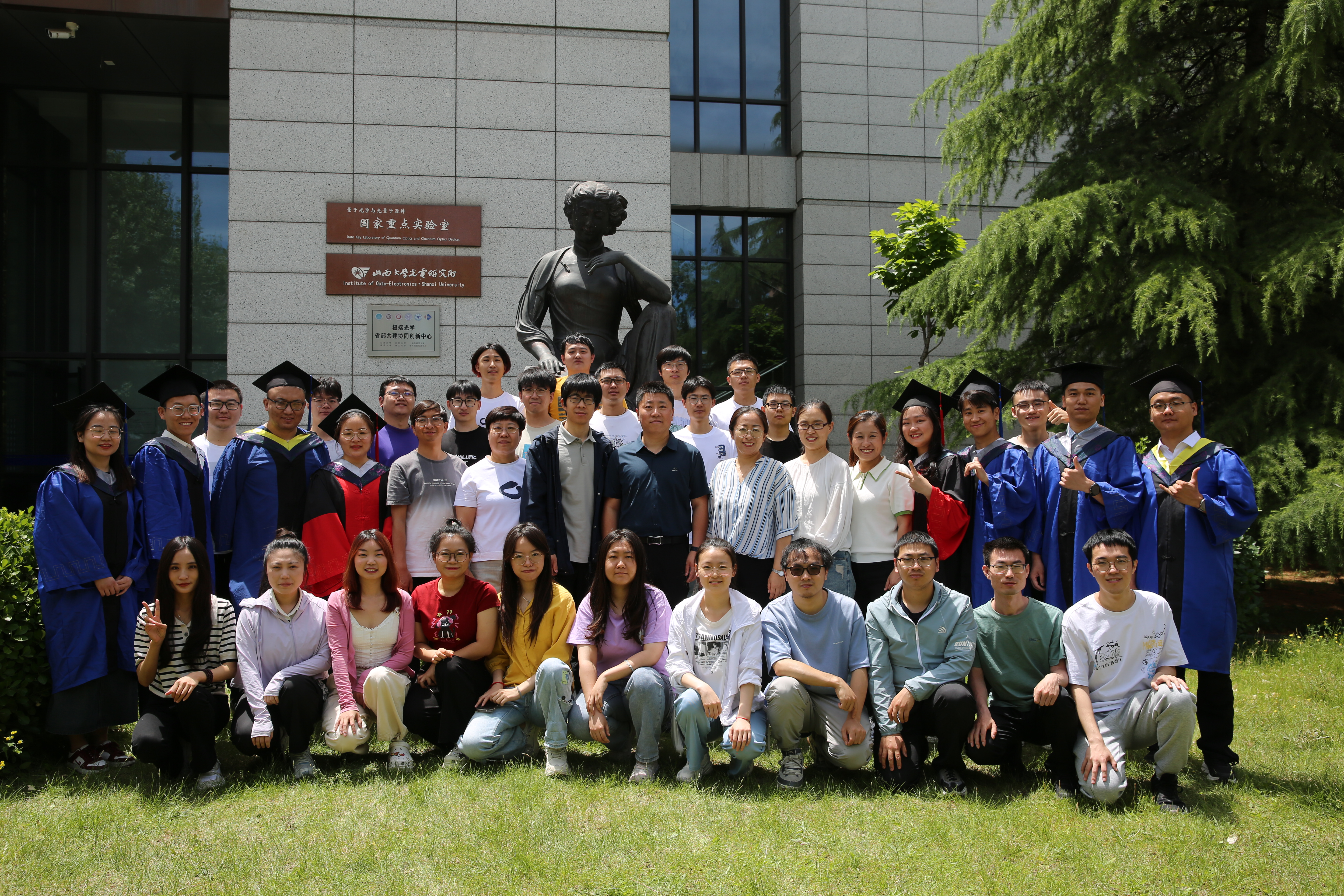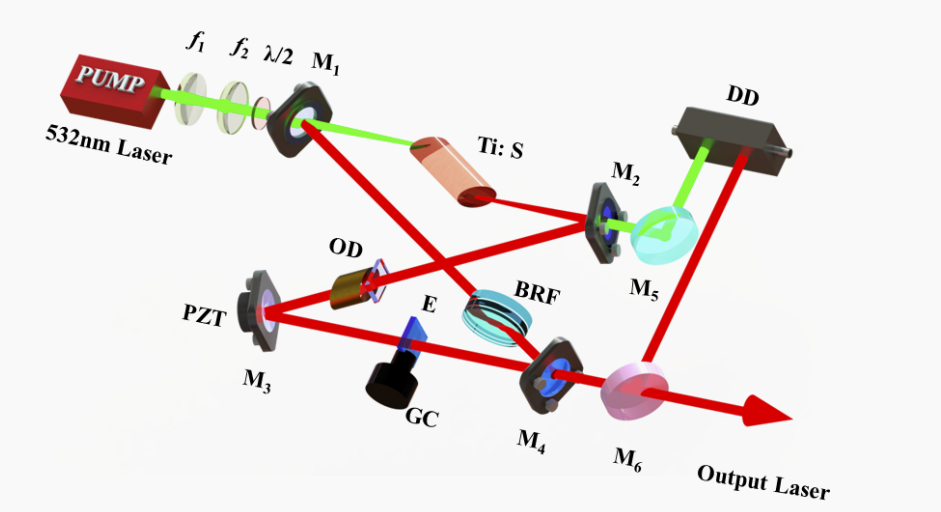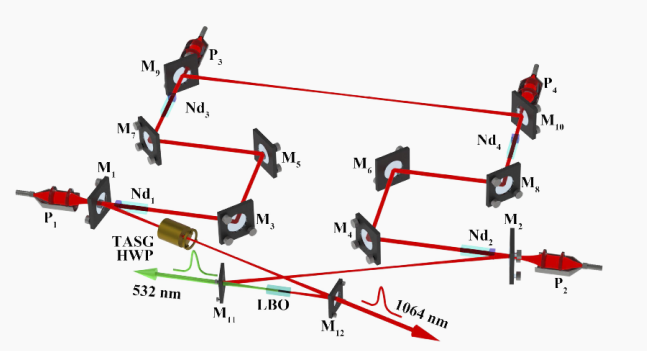


The development platform for quantum technology is focused on the research and development of the quantum optics devices, including continuous variable nonclassical light sources, high-quality all-solid-state continious-wave single frequency lasers and all-solid-state continious-wave single frequency tunable lasers. The continuous variable nonclassical light sources have been supplied to Nanjing University, East China Normal University, and so on. The all-solid-state continious-wave single frequency high-power lasers and tunable lasers have been utilized in Hong Kong University of Science and Technology, Institute of Physics, Shanghai Institute of Optics and Fine Mechanics, Tsinghua University, Nankai University, Nanjing University, Shandong University, et al. Nowadays, the platform is concentrated on the development of hundred watts level low-noise lasers, high squeezing degree and entanglement degree continuous variable nonclassical light sources.

Realization of CW single-frequency tunable Ti:sapphire laser with immunity to the noise of the pump source
Authors:JIAQI SONG, JILIANG QIN, PIXIAN JIN, YANAN CHEN, JING SU, AND HUADONG LU
All-solid-state continuous-wave (CW) single-frequency tunable Ti:sapphire (Ti:S) laser is an important source in quantum optics and atomic physics. However, intracavity etalon (IE) locking is easily influenced by the intensity noise of the pump source in the low frequency band. In order to address this issue, a differential detector with dual-photodiodes (PDs) is designed and employed in the experiment. Both PDs are used to detect the lights of the pump source and the built Ti:S laser, respectively. As a result, the influence of the intensity noise of the pump source on the stability of the IE locking is successfully eliminated and the IE is stably locked to the oscillating longitudinal-mode of the laser. On this basis, a stable CW single-frequency tunable Ti:S laser is realized. The presented method is beneficial to attain a stable single-frequency tunable laser with immunity to the intensity noise of the pump source.

Self-mode-matching compact low-noise all-solid-state continuous wave single-frequency laser with output power of 140 W
Authors:Yixiao Wei,Weina Peng, Jiawei Li, Pixian Jin,Jing Su, Huadong Lu∗ AND Kunchi Peng
The high power all-solid-state continuous wave single-frequency laser is a significant source for science and application due to good beam quality and low noise. However, the output power of the laser is usually restricted by the harmful thermal lens effect of the solid gain medium. To address this issue, we develop a self-mode-matching compact all-solid-state laser with a symmetrical ring resonator in which four end-pumped Nd:YVO4 laser crystals are used for both laser gain media and mode-matching elements. With this ingenious design, the thermal lens effect of every laser crystal can be controlled and the dynamic of the esigned laser including the stability range and the beam waist sizes at crystals can be manipulated only by adjusting the pump power used on each laser gain medium. Under an appropriate combination of pump powers on four crystals, self-mode-matching in a resonator is realized. A stable CW single-frequency at 1064 nm with 140-W power, 102-kHz linewidth, and low intensity noise is obtained. The presented design paves an effective way to further scale-up the output power of a compact laser by employing more pieces of gain media.

Recent progress in continuously tunable low-noise all-solid-state single-frequency continuous-wave laser based on intracavity locked etalon
Authors:Pixian Jin , Jiao Wei , Jing Su , Huadong Lu * and Kunchi Peng
All-solid-state single-frequency continuous-wave (CW) lasers have been applied in many fifields of scientifific research owing to their intrinsic advantages of high beam quality, low noise, narrow linewidth, and high coherence. In atom-based applications, single-frequency lasers should also be continuously tuned to precisely match their wavelengths with the transition lines of the corresponding atoms. Continuous frequency tuning of the laser is mainly achieved by continuously scanning the laser cavity length after the intracavity tuning element etalon is locked to an oscillating laser mode. However, the modulation signals necessary in current etalon locking systems increase the noise of the continuously tunable lasers and in some r espects limit their applications in Frontier scientifific research. Moreover, the obtained continuous frequency tuning range with the etalon locking technique is restricted by the free spectrum range of the adopted etalon. In this paper, we systematically summarize recent progress of the continuously tunable single-frequency CW lasers based on intracavity locked etalon, including the advanced etalon locking techniques and the tuning range expansion approach. As a result, the low noise and high stable all-solid-state single-frequency CW tunable lasers are successfully developed.

Continuously tunable CW single-frequency Nd:YAP/LBO laser with dual-wavelength output
Authors:Pixian Jin , Yi Cui , Jing Su , Huadong Lu *, and Kunchi Peng
We present a continuously tunable high-power continuous wave (CW) single-frequency (SF) Nd : YAlO3/lithium triborate (Nd:YAP/LBO) laser with dual-wavelength output, which is implemented by combining an optimized and locked etalon with an intracavity nonlinear loss. The obtained output powers of the stable SF 1080 and 540 nm lasers are 2.39 and 4.18 W, respectively. After the etalon is locked to an oscilating mode of the laser, the wideband continuous frequency tuning and long-term stable single-longitudinal-mode operation of the laser are successfully realized, which can be well used for the applications of quantum information and quantum computation. To the best of our knowledge, this is the first realization of the continuously tunable high-power CW SF 1080/540 nm dual-wavelength laser.

